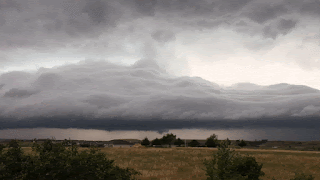 |
| 'Banshee' |
Suddenly, an explosion occurs from inches away, a brown blur bursting from within the branches, startling you into instant flight, survival and safety foremost in fright.
 All this, and more, I experienced when I stopped to admire 'Banshee', a Damask shrub rose traced back to 1773 by some sources, but listed as 1923 in Modern Roses 12. My particular specimen came via a purchase from Hartwood Roses a number of years ago. Once believed to be an older Gallica, she is now thought on helpmefind/roses to be a turbinata known under a variety of other names. 'Banshee' is, in fact, known as "The Great Impersonator" among roses. 'Banshee' is a 7 foot tall shrub for me, nearly as wide, with long lax stems and few or no thorns. She is extremely healthy and completely cane-hardy in my climate, strongly and sweetly scented, with loosely arranged double (17-25 petals) white blooms blushed strongly with pink. She blooms once a year over a long period of spring, and although most sources suggest that she balls up in wet weather, I haven't noticed her do that nearly as badly as 'Maiden's Blush' does in my garden. Since the "balling" seems to be mentioned so ubiquitously, could it be that I've got an impersonator of 'Banshee' here?
All this, and more, I experienced when I stopped to admire 'Banshee', a Damask shrub rose traced back to 1773 by some sources, but listed as 1923 in Modern Roses 12. My particular specimen came via a purchase from Hartwood Roses a number of years ago. Once believed to be an older Gallica, she is now thought on helpmefind/roses to be a turbinata known under a variety of other names. 'Banshee' is, in fact, known as "The Great Impersonator" among roses. 'Banshee' is a 7 foot tall shrub for me, nearly as wide, with long lax stems and few or no thorns. She is extremely healthy and completely cane-hardy in my climate, strongly and sweetly scented, with loosely arranged double (17-25 petals) white blooms blushed strongly with pink. She blooms once a year over a long period of spring, and although most sources suggest that she balls up in wet weather, I haven't noticed her do that nearly as badly as 'Maiden's Blush' does in my garden. Since the "balling" seems to be mentioned so ubiquitously, could it be that I've got an impersonator of 'Banshee' here? The aforementioned "brown blur" was a Brown Thrasher, Toxostoma rufum, presumably a female of the species. Once my heart rate slowed down from the adrenaline rush, I looked closer and found that I had disturbed her incubating a clutch of five pale blue-speckled brown eggs in a delightful, but rough, little nest of twigs.
The aforementioned "brown blur" was a Brown Thrasher, Toxostoma rufum, presumably a female of the species. Once my heart rate slowed down from the adrenaline rush, I looked closer and found that I had disturbed her incubating a clutch of five pale blue-speckled brown eggs in a delightful, but rough, little nest of twigs.
Brown Thrasher's are abundant east of the Rockies, and I'm pleased to make the acquaintance of this otherwise nondescript little bird of my prairie. They are said to have the largest song repertoire of all birds, over 1000 different types of song, but since I have never taken the time to learn bird identification by song (except for the "Bob White" of quail), I don't know how many of the early morning choir outside my bedroom windows may be Brown Thrasher's, but I suspect they may represent a large portion of the chorus. An omnivore, it will evidently eat anything and it is fiercely territorial around nests, even attacking humans. I'll give this nest a wide berth in the next few weeks since I don't want to initiate a mini-replay of Hitchcock's 1963 The Birds here in Kansas, even less with myself in the starring role of frantically-pecked-to-death human.
That's life in my Kansas garden today, a rose that might-or-might-not be 'Banshee', harboring a perfect little potential family of avian Von Trapp's. And lots of sunshine and, finally, more normal summer temperatures than the recent and long cool spring. If you need me, I'll be in the garden.














































